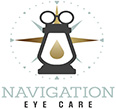Back-to-School Vision Prep: A Guide to Getting Your Child’s Eyes Ready
As the summer sun begins to wane, the excitement of a new school year takes center stage. Amid the rush of purchasing school supplies and planning schedules, one essential aspect often goes unnoticed: your child’s visual health. Clear vision is a cornerstone of effective learning, and ensuring your child’s eyes are ready for the school year ahead is a vital step. In this article, we’ll navigate through a comprehensive guide on prepping your child’s eyes for school while emphasizing the importance of consulting an Optometrist Chesapeake VA at Navigation Eye Care.
The Eyes in the Learning Landscape: Why Back-to-School Vision Prep Matters
Learning is a visually intensive activity. Reading, writing, engaging with digital screens, and participating in classroom activities all require optimal visual acuity and comfort. By taking the time to prepare your child’s eyes for the academic journey ahead, you’re investing in their educational success and overall well-being.
Evaluating Your Child’s Current Visual Health
Begin your back-to-school vision prep by scheduling a thorough eye examination with an experienced pediatric eye doctor. A comprehensive eye check-up assesses various aspects, including visual acuity, eye coordination, and overall eye health. Detecting potential issues beforehand allows for timely intervention and prevents any hindrances to learning.
Screen Time Management
In today’s digital age, screens are an integral part of education. However, excessive screen time can lead to digital eye strain and discomfort. To mitigate this, establish screen time limits and encourage regular breaks. The 20-20-20 rule—taking a 20-second break to look at something 20 feet away every 20 minutes—helps alleviate eye strain.
Healthy Habits for Healthy Eyes
Proper nutrition plays a pivotal role in maintaining optimal eye health. Incorporate foods rich in vitamins A, C, and E, as well as omega-3 fatty acids, into your child’s diet. Carrots, spinach, oranges, and fish are excellent choices. Staying hydrated is equally important, as it supports tear production and prevents dry eyes.
Choosing the Right Eyewear
If your child requires eyeglasses, make sure they have a comfortable and up-to-date pair. Ill-fitting or outdated glasses can hinder your child’s ability to see clearly and focus. Consult your Optometrist Chesapeake VA at Navigation Eye Care for guidance on selecting the right eyewear that suits your child’s visual needs and personal style.
Encouraging Outdoor Activities
Outdoor playtime isn’t just fun—it’s beneficial for visual health. Natural light exposure helps regulate sleep patterns and supports the development of healthy eyes. Encourage your child to engage in outdoor activities to promote overall well-being, including their visual health.
Stress-Free Sleep Routine
Adequate sleep is crucial for your child’s overall health and well-being, including their eyes. Establish a consistent sleep routine that allows for a sufficient number of hours of rest. Quality sleep supports proper eye function and reduces the risk of eye strain.
Open Communication and Regular Check-ups
Maintaining open communication with your child about their visual comfort is essential. Encourage them to share any discomfort or changes in their vision. Additionally, regular eye check-ups with a pediatric eye doctor should be part of your child’s routine, ensuring any issues are addressed promptly.
In conclusion, as you gear up for the back-to-school season, remember that clear vision is a cornerstone of your child’s academic success. By following this comprehensive guide and partnering with an experienced Optometrist Chesapeake VA, you’re laying the foundation for a successful and comfortable school year. Prioritizing your child’s visual health not only supports their learning journey but also empowers them to navigate the world with clarity and confidence.
Digital Dilemma: Navigating Screen Time for Kids’ Healthy Eyes
In the modern world, screens have become an integral part of our lives. From educational apps to interactive learning platforms, digital devices offer a wealth of opportunities for kids’ growth and development. However, with the increased reliance on screens comes a pressing concern: the impact on children’s eye health. As parents, it’s essential to strike a balance between technology and well-being. In this article, we’ll delve into the digital dilemma and provide strategies to ensure healthy eyes for your children, with insights from Optometrist Chesapeake VA.
The Rise of Screens: Understanding the Impact on Kids’ Eyes
Digital devices have revolutionized how children learn, communicate, and entertain themselves. While this technological advancement brings numerous benefits, it’s also accompanied by potential drawbacks. Excessive screen time can lead to digital eye strain, also known as computer vision syndrome, characterized by symptoms such as eye discomfort, headaches, dry eyes, and blurred vision.
Setting Screen Time Limits
Establishing clear and realistic screen time limits is the first step in mitigating the negative effects of digital devices. The American Academy of Pediatrics recommends no more than 1 hour of screen time per day for children aged 2 to 5, and consistent limits for older children. Engage in open discussions with your kids about the importance of balancing screen time with other activities.
Implementing the 20-20-20 Rule
The 20-20-20 rule is a simple yet effective technique to alleviate digital eye strain. Every 20 minutes, encourage your child to take a 20-second break from the screen and focus on an object at least 20 feet away. This practice helps relax the eye muscles and prevents prolonged strain.
Creating a Screen-Friendly Environment
The environment in which your child uses digital devices can greatly impact their eye health. Ensure proper lighting to reduce glare on screens and minimize eye strain. Position screens at eye level to prevent neck and back strain, and encourage good posture during screen time.
Promoting Outdoor Activities
Encouraging outdoor activities not only offers physical benefits but also supports healthy eyes. Natural light exposure helps regulate the sleep-wake cycle and contributes to overall eye health. Allocate time for outdoor play and activities to counterbalance the effects of screen time.
Regular Eye Check-ups with a Pediatric Eye Doctor at Navigation Eye Care
Proactive measures, such as implementing screen time limits and creating a screen-friendly environment, play a significant role in maintaining healthy eyes. However, regular eye check-ups with an Optometrist Chesapeake VA are crucial for comprehensive eye care. These professionals can identify and address any potential issues related to digital eye strain or other visual concerns.
Encouraging Breaks and Activities
Encourage your child to take breaks from screens and engage in activities that promote eye health. Arts and crafts, outdoor play, reading physical books, and participating in sports are excellent alternatives that reduce prolonged screen exposure.
Modeling Healthy Screen Habits
Children often learn by example. By modeling healthy screen habits yourself, you demonstrate the importance of balance and moderation. Implement the same screen time limits and practices you expect from your children to create a family-wide culture of eye health.
The digital dilemma presents a challenge that can be met with awareness and proactive steps. By setting screen time limits, implementing strategies to reduce eye strain, promoting outdoor activities, and ensuring regular eye check-ups with an Optometrist Chesapeake VA, you’re taking significant strides toward safeguarding your child’s eye health in a digital age. Remember, a mindful approach to screen time not only supports healthy eyes but also fosters a balanced and well-rounded upbringing for your children.

